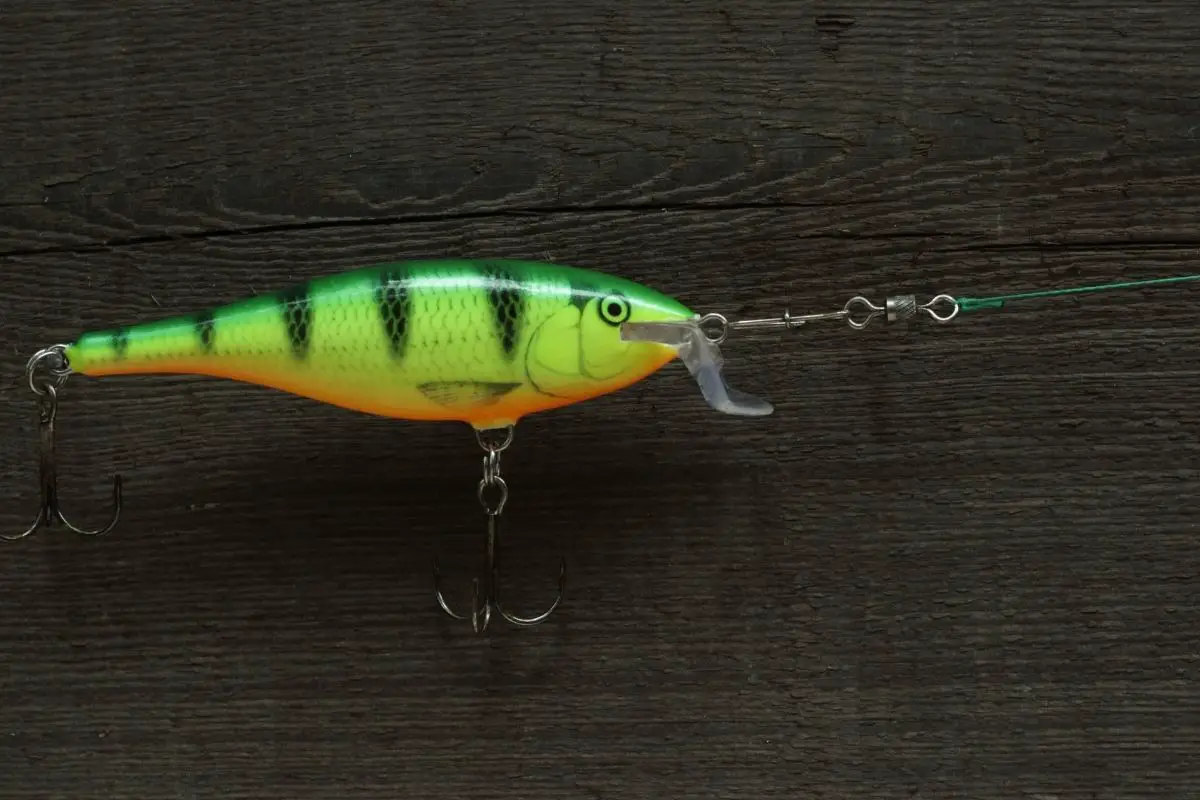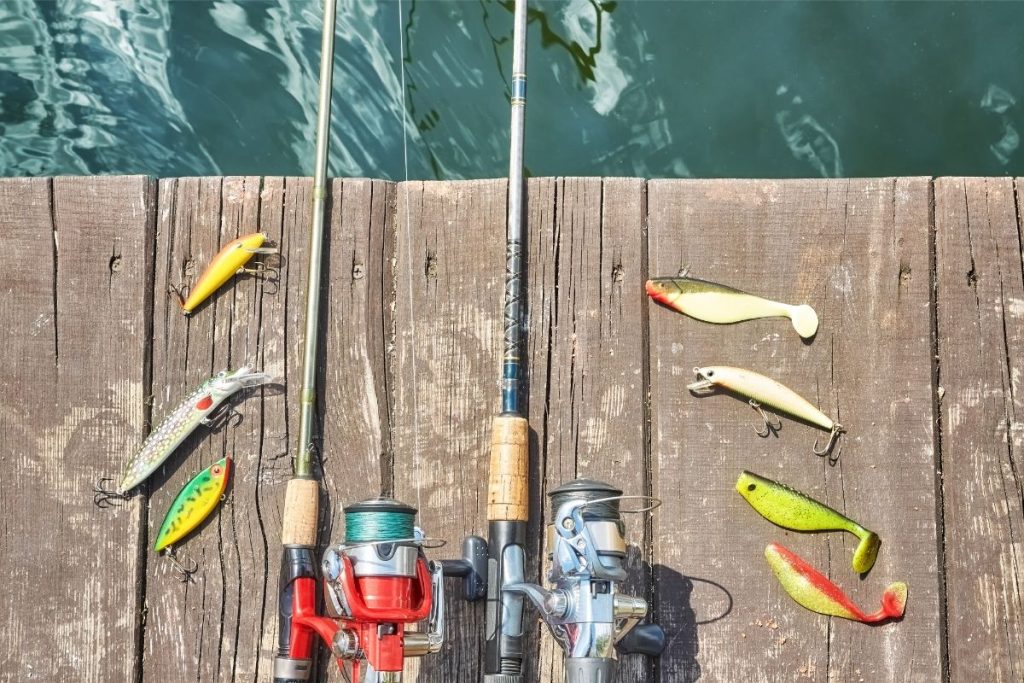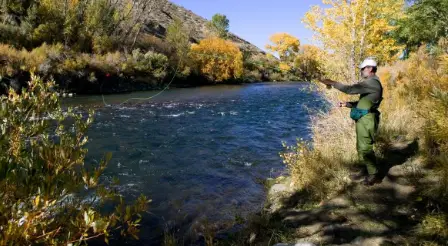Crankbaits are some of the most effective lures out there. They are designed to imitate live baitfish, such as minnows or shad, and they are great at attracting fish. Crankbaits can attract trout, pike, perch, and walleye, how to do fishing with crankbaits. But they’re best known for catching largemouth bass.
Professional anglers love crankbait and can use it to make some phenomenal catches. But crankbaiting is a skill, one that requires some practice. Learning to fish with crankbait is about learning what type of crankbait to use, when to use it, and how.
If you want to catch more bass, then read on! We’ll teach you all the basics you need to know about crankbait fishing.
Why Use Crankbait?
fishing with crankbaits is a type of artificial lure, known for a diving motion that mimics a baitfish. Crankbait can be used to attract a whole range of fish, but they’re best used with largemouth bass.
How to do fishing with crankbaits? Crankbaits come in various shapes and sizes, but typically have a lip that enables a diving movement. However, lipless crankbait is also available. When reeled in, the wiggling movement of the crankbait appears like a live fish, and predators are drawn to your line.
Another fantastic advantage of the crankbait is how much water it can cover. With an effective casting and retrieving method, crankbait can enable you to cover some large bodies of water.
They’re also designed for different depths, so you can seek out lurking fish wherever they are.
The shape and design of the crankbait affect how and where you use it, although natural motion is a defining feature.
How To Fish Crankbaits
Just casting and reeling with crankbait might catch you a few fish, but it really isn’t the most effective method.
Fishing with crankbaits can be used to lure a number of fish, but you probably plan on targeting largemouth bass. The largemouth bass typically sticks to shallower water and is drawn to the appealing movement of the crankbait. Begin by choosing exactly where you plan on fishing with crankbait, so you can decide on the lure to use.
Choosing the right crankbait is hugely important. The range of crankbait available is massive, and different varieties are better suited for different areas, seasons, and conditions.
Having decided on the crankbait to use, you need to consider your line size. Crankbait can achieve depth and distance, so go for a long cast. Crankbait is more effective over a long cast, as it has more time to get to work. Use fish finders to work out at what depth the fish are, so you can select a line size.
Then, it’s all about the retrieval. This is where a lot of first-time crankbait users go wrong. Too fast or too slow can ruin the natural movement and negate the skill of the crankbait.
At first, use a medium to slow retrieval that gives the crankbait a chance to swim in the water column. Keep a steady retrieve, and stay aware of where the fish are and how they’re responding.
As you learn, you can move away from a straight retrieve and really start to play with your style. Change your retrieval method to force a bite out of unreactive fish.
Add some pauses or “stop-and-go” to try and push the fish to respond to erratic action. When bass see the suspected prey is getting away, they’re more likely to bite.
Experimenting will teach you what the fish are responding to, and then you can get into a pattern. The more practice you have, the more natural these movements will become. Soon, you will learn to adapt your fishing with crankbaits style to the conditions you’re in and how the fish are reacting.
Types Of Crankbaits

Tyger Leader is reader-supported and may earn a commission when you book or purchase using our links. Learn more about our affiliate disclaimer here.
Squarebill Or Shallow Diving
The square bill or shallow diving fishing with crankbaits is best used in ten feet of water or less. If you’re on the dock or shoreline, the square bill crankbait will mimic the movement of the baitfish found in this shallow water area.
Shallow diving crankbait runs just above the weeds and is best used a couple of weeks after spawning season and in mid-fall.
Medium Diving
Medium diving fishing with crankbaits will typically reach a depth of around 8 to 12 feet. Try using medium diving crankbait when the water warms in spring and at the end of fall. They can also be used a couple of weeks after spawning, although they aren’t generally used much in summer.
Deep Diving
The deep-diving crankbait gets to a depth of roughly 12 feet and is best employed in the fall. You may also find a use for the deep-diving crankbait in summer when the bass is less interested in lures. Run the deep divers along the bottom of deeper water to create vibrations, and draw the bass to you.
Lipless
Lipless crankbait are something a bit different. Without the lip, they don’t have that classic diving motion of the traditional crankbait. However, they’re weighted, so can be used at versatile running depths. Learning to use the lipless fishing with crankbaits really is an art, as the retrieval can create wobbling movements or big dives.
Wobble
As well as depth of dive, the shape of the crankbait can give it a tight wobble or a loose wiggle. The wobble is important depending on the water temperature and the time of year.
In warm water, the wider wobble of a round-bodied crankbait appeals to the more aggressive fish. But when water is cold and the fish are lethargic, the tighter wiggling motion of a narrow crankbait can force a bite.
What Color Crankbait To Use?
When choosing your color, keep in mind that basic is normally better. Crankbaits are available in any color you can think of, but simple colors are more versatile. Shad patterns are really common, as are crawfish colorings and chartreuse.
The water clarity is also critical, In clear waters, pick natural colors. In murky water, go for something a bit brighter.
Final Thoughts
How to do fishing with crankbaits isn’t rocket science. It’s about learning from experience, experimenting, and adapting your technique to suit the conditions. Don’t worry if you don’t catch anything right off. Just keep trying new movements, different diving depths, and various crankbait colors until you do.



